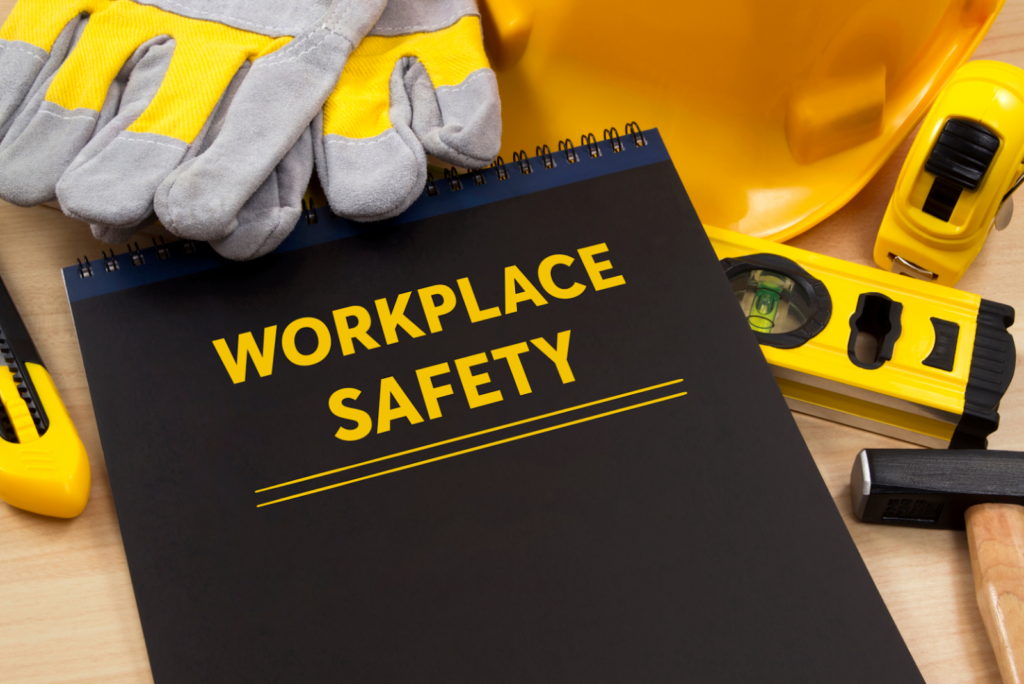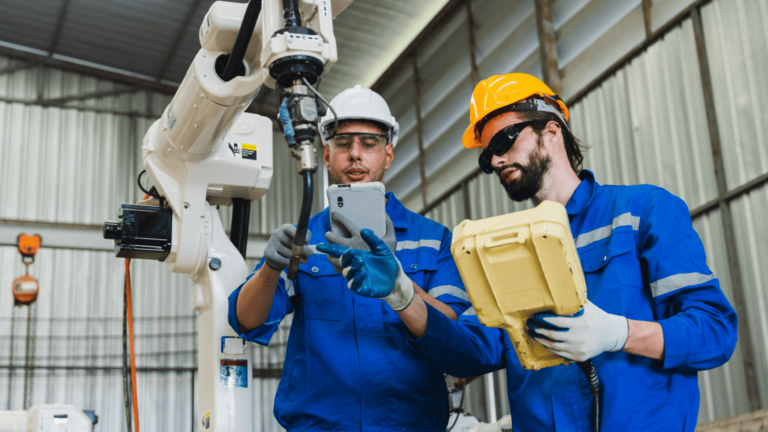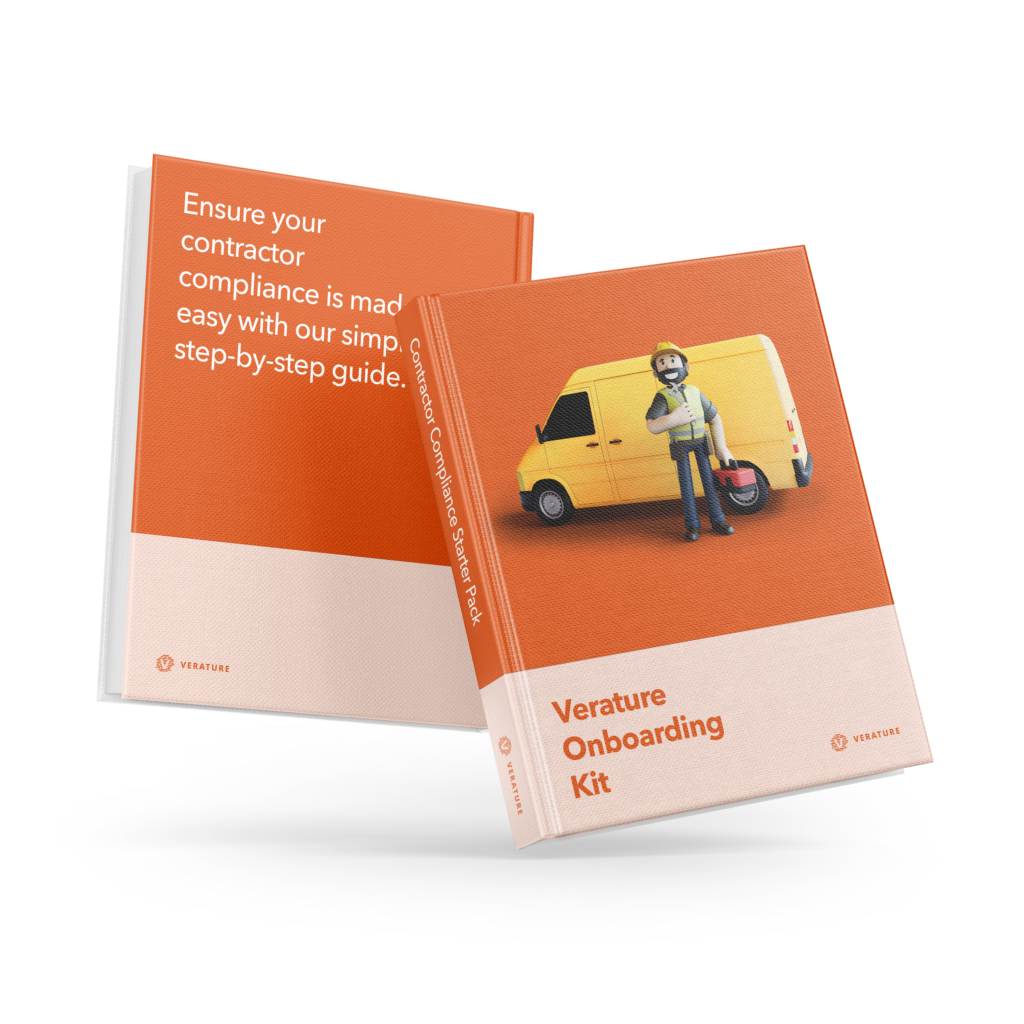- Why Verature?Find out why Verature is the best system for continuous contractor compliance.
- Arrive, Work & Stay Safe
- Removes Paper & Spreadsheets
- Tracks Key Contractors
- Instant 360 Visibility
- Contractor Management Dashboards
- Why Contractor Management Software
- Our Customer Reviews
- Pricing
We don’t hide behind fancy sales teams before we tell you, our prices.- Clients
See who we are working with and what they have to say about Verature.- Resources
Check out our blog, useful guides, whitepapers and product videos.- Prequalification and Induction Guide
- Contractor Compliance Guide
- Mini-Audit your Permit to Work System
- Health and Safety Audit Checklist
- Resource Library
- Blog
Book a demo
Why Safety Culture is the Backbone of a Thriving Business
Why Safety Culture Matters
In today’s business landscape, safety culture is not just a compliance checkbox; it is a critical component of a successful and sustainable organisation. A strong safety culture permeates every level of a business, influencing how employees perceive their roles and responsibilities, especially regarding health and safety.
Beyond Compliance
When safety is deeply ingrained in a company’s culture, it transcends the basic requirements of regulatory compliance. It becomes a fundamental driver of productivity, employee morale, and overall business resilience. A robust safety culture helps prevent accidents and reduces the risks of costly disruptions. Moreover, it fosters a sense of security and well-being among employees, which directly correlates with higher engagement, lower absenteeism, and improved productivity.Positive Workplace Environment
Employees who feel safe and valued are more likely to be motivated, contributing to a positive workplace atmosphere that enhances cooperation and innovation. Additionally, a strong safety culture enhances an organisation’s reputation, building trust with clients, partners, and the wider community. This trust is essential for long-term success, particularly in industries where safety is paramount.Verature’s Role in Safety Culture
Integrating Health and Safety
Verature, a leader in contractor management software, plays a pivotal role in supporting and enhancing safety culture within organisations. By integrating comprehensive health and safety features into its platform, Verature ensures that safety protocols are not only established but also actively managed and monitored.Real-Time Tracking and Reporting
The software enables businesses to automate safety compliance processes, ensuring that all contractors and employees adhere to the highest safety standards from the moment they step on-site. Verature’s tools allow for real-time tracking and reporting, which is crucial for maintaining a safe working environment. Features such as digital dashboards, automated alerts, and self-service check-ins provide a seamless way to manage safety compliance, ensuring that potential risks are identified and addressed before they escalate into serious incidents.Building a Safety-First Mindset
By embedding safety into the operational workflow, Verature helps businesses build a safety-first mindset that supports their overall success and sustainability.The Impact of Safety Culture on Business Performance
Reducing Workplace Accidents
A strong safety culture is intrinsically linked to improved business performance. Companies that prioritise safety often see a significant reduction in workplace accidents, which translates to fewer disruptions, lower insurance premiums, and reduced legal liabilities.Enhancing Employee Morale
The direct financial benefits are clear, but the impact of a strong safety culture extends further. When safety is prioritised, employees are more likely to feel valued and respected, which enhances job satisfaction and loyalty. This positive work environment encourages higher productivity, as employees are more engaged and motivated to perform their best.Industry-Specific Examples
For example, in industries such as construction and manufacturing, where the risks of accidents are higher, companies with a robust safety culture often outperform their competitors. They experience fewer delays and downtime due to accidents, allowing them to meet project deadlines and maintain client trust. Additionally, a reputation for safety can be a significant competitive advantage, attracting high-quality clients and employees who are looking for secure and responsible workplaces.Key Components of a Robust Safety Culture
Setting the Tone
Leadership is the cornerstone of a robust safety culture. When leaders visibly commit to safety, it sets the tone for the entire organisation. This commitment must be demonstrated through actions, not just words.Active Participation in Safety
Leaders should actively participate in safety meetings, support safety initiatives, and ensure that safety policies are not only implemented but also continuously reviewed and improved. As highlighted by industry experts, organisations where leadership actively promotes safety are more likely to develop a culture where safety is embedded in every decisionEmployee Engagement
Ownership of Safety
Employee engagement is equally vital in cultivating a strong safety culture. Engaging employees in safety practices, such as forming health and safety committees or conducting regular toolbox talks, empowers them to take ownership of their safety and that of their colleagues.Shared Responsibility
This participatory approach ensures that safety is a shared responsibility, fostering a proactive culture where potential risks are identified and mitigated before they result in accidentsContinuous Education and Training
Ongoing Training for All
Ongoing education and training are essential to maintaining high safety standards. Continuous training ensures that all employees, regardless of their role, are aware of the latest safety protocols and understand how to apply them in their daily tasks.Preventing Accidents
This not only helps in preventing accidents but also ensures compliance with regulatory requirements. Moreover, regular training sessions provide an opportunity to reinforce the importance of safety, keeping it at the forefront of employees’ mindsBy integrating these key components—leadership commitment, employee engagement, and continuous education—into the safety culture, businesses can create an environment where safety is prioritised and ingrained into the fabric of the organisation. This approach not only protects employees but also enhances overall business performance and sustainability.
Technology’s Role in Strengthening Safety Culture
In today’s fast-paced business environment, technology plays a crucial role in maintaining and enhancing safety culture. Digital tools, particularly those offered by Verature, enable businesses to centralise safety management processes, ensuring that all aspects of safety are efficiently monitored and controlled. Verature’s software allows for the automation of compliance tasks, reducing the administrative burden on safety managers and ensuring that safety protocols are consistently followed.Real-Time Monitoring and Compliance
One of the standout features of Verature’s platform is its real-time monitoring capability. This feature ensures that safety data is continuously updated, allowing managers to respond immediately to any potential risks. Automated alerts and notifications help keep everyone informed about safety issues as they arise, which is critical for maintaining a high level of safety culture across the organisation. By using such digital tools, businesses can create a more proactive safety environment where risks are managed before they escalate into serious problems.Examples of Technology Integration
Numerous companies have successfully integrated technology to enhance their safety culture, leading to significant improvements in safety performance and business outcomes. For instance, businesses in the construction and manufacturing sectors have leveraged digital platforms to streamline safety checks, manage compliance records, and facilitate communication between teams. These tools have not only reduced the frequency of accidents but also improved overall productivity by ensuring that safety procedures are seamlessly integrated into daily operationsAdapting to Industry-Specific Needs
The adaptability of these technologies to specific industry needs has been a key factor in their success. By tailoring the software to meet the unique challenges of different sectors, companies can ensure that their safety culture is both robust and relevant, providing a competitive edge in increasingly safety-conscious marketsEngaging Contractors in Your Safety Culture
In many industries, contractors play a critical role in daily operations, making it essential that they adhere to the same safety standards as full-time employees. Extending safety culture to contractors ensures that they are equally committed to maintaining a safe working environment. This integration is vital because contractors, who may not be as familiar with the company’s safety protocols, can pose significant risks if not properly managed.Building a Unified Safety Approach
By including contractors in your safety culture, you create a unified approach to safety that covers all individuals on-site, reducing the risk of accidents and ensuring that everyone understands their responsibilities. This comprehensive approach not only protects the well-being of all workers but also enhances the overall effectiveness of the safety programme, ensuring that safety is consistently prioritised across all operationsUsing Verature for Contractor Compliance
Verature’s contractor management tools are designed to simplify the process of ensuring that contractors comply with your organisation’s safety standards. The platform allows businesses to manage contractor documentation, verify qualifications, and track compliance in real time. This level of oversight ensures that contractors meet the required safety criteria before they begin work, significantly reducing the potential for safety breaches.Automated Compliance Checks
Additionally, Verature’s software automates many of the compliance checks that would otherwise require manual oversight, saving time and reducing the risk of human error. By using Verature, businesses can ensure that all contractors are fully integrated into their safety culture, thereby enhancing overall site safety and reducing risks associated with third-party workers.Evaluating and Continuously Improving Safety Culture
Evaluating Safety Culture Effectiveness
To maintain a strong safety culture, it is essential to regularly evaluate its effectiveness. This can be achieved through various assessment tools and techniques, such as employee surveys, safety audits, and performance reviews. These methods provide valuable insights into how well the safety culture is being implemented and where improvements might be neededRegular Safety Audits
For example, regular safety audits can help identify gaps in safety practices, ensuring that all areas of the organisation are adhering to safety protocols. Employee surveys can also offer insights into how well the safety culture is being received by staff, highlighting any concerns or areas where additional training may be required.Feedback Loops and Continuous Improvement
Creating effective feedback mechanisms is crucial for the continuous improvement of safety culture. By encouraging employees to report safety concerns and suggest improvements, organisations can foster a proactive safety environment where issues are addressed before they lead to accidentsExamples of Continuous Improvement Initiatives
One example of a successful continuous improvement initiative is the implementation of a ‘Safety Suggestion Box’ where employees can anonymously submit ideas for improving safety practices. Another is the establishment of regular ‘Safety Walks,’ where management teams engage directly with employees on the ground to discuss safety issues and gather feedback. These initiatives not only enhance safety culture but also empower employees to take an active role in maintaining a safe workplace.Long-Term Benefits of a Strong Safety Culture
The long-term benefits of maintaining a strong safety culture are extensive. One of the most significant advantages is the reduction in workplace accidents, which directly correlates with lower operational disruptions and reduced legal risks. A robust safety culture ensures that all safety protocols are followed diligently, minimising the likelihood of incidents that could lead to costly legal battles and regulatory fines.Ensuring Regulatory Compliance
Additionally, a strong safety culture helps ensure compliance with industry regulations, which is crucial for avoiding penalties and maintaining a good standing with regulatory bodies. This compliance not only protects the business from financial risks but also contributes to a safer, more efficient workplace.Enhanced Reputation and Trust
A company with a strong safety culture is often viewed more favourably by clients, partners, and the wider community. This positive reputation can be a powerful asset, helping to attract new business and retain existing clients who value safety as a key priority.Trust Among Employees and Contractors
Moreover, employees and contractors are more likely to trust and remain loyal to a company that consistently demonstrates a commitment to their safety. This trust leads to higher employee retention rates and a more engaged, motivated workforce, which further drives business success.Conclusion
In conclusion, safety culture is foundational to the success and sustainability of any business. It goes beyond mere compliance, influencing every aspect of operations from employee engagement to productivity and reputation. By integrating a strong safety culture, businesses not only protect their employees but also position themselves for long-term success in a competitive market.Leveraging Verature for Safety Excellence
Verature’s tools play a critical role in supporting and enhancing this safety culture, offering solutions that streamline compliance, engage contractors, and provide real-time monitoring to ensure safety is always a top priority. By leveraging these tools, businesses can build and maintain a safety culture that supports their overall growth and success.See Verature in Action: Book Your Personalised Demo Today!
Are you ready to discover how Verature can transform your contractor management and safety culture? Booking a demo with us is the perfect way to see our platform in action and explore how it can meet your specific needs.
What to Expect During Your Demo
- We Listen to You: Share your business challenges and let us understand your current processes.
- Tailored Walk-Through: We’ll guide you through the system in a personalised demo, showing you how Verature can seamlessly integrate into your operations.
- Interactive Exploration: Post-demo, you’ll receive login details to access a live demo system, allowing you to explore the platform on your own time.
- No Pressure, Just Solutions: We’re here to help, not sell. Rest assured, our approach is all about finding the right fit for you—no high-pressure tactics involved.
Booking Your Demo in 5 Easy Steps
- Pick a Date: Use our calendar to choose a date for your demo. Clickable dates will be highlighted once selected.
- Choose Your Session Length: Opt for a 30-minute quick tour if you’re pressed for time or a full 60-minute walkthrough for a comprehensive exploration.
- Select a Time: Choose a convenient time slot from the available options.
- Enter Your Details: Fill in your information and hit ‘schedule appointment’ to confirm.
- Get Ready for Your Demo: You’ll receive a Zoom invite directly to your inbox. (Be sure to check your junk/spam folder just in case!)
Prefer a Different Platform?
No problem! Simply reach out to us at april.waddington@verature.co.uk and we’ll arrange an alternative meeting platform that suits you.Book your demo today and take the first step towards enhancing your safety culture with Verature!
Book a demoFind out if you’re ready with our Verature Onboarding Kit
Not sure if Verature is right for you? We understand it’s not easy to make a decision on a new system, but that’s why we’ve created our Onboarding Kit to make that that process simple.
Check our package details
Find out no matter what package you choose, you’ll be getting the best features you need for you and your team so you can have continuous contractor compliance.
Make it your own
You’ll get to see and choose your customisation options, and check out the available add-ons and extras so the system is exactly what you want and need.
Quickly getting you started.
Keeping this guide with you, and working closely with us, we can walk you through each step so you can be completely up and running with your own Verature system.
More reasons to use Verature
It’s easy to get started.
Step 1
Book a demo of Verature with the team.
Step 2
We’ll chat through your requirements and see if Verature is right for you.
Step 3
We’ll send you demo access and our onboarding kit to help you decide what you need.
Step 4
You decide if we’re right for you. No pushy sales calls.
Step 5
Like what you see and hear? Let’s get you onboarded with Verature!









